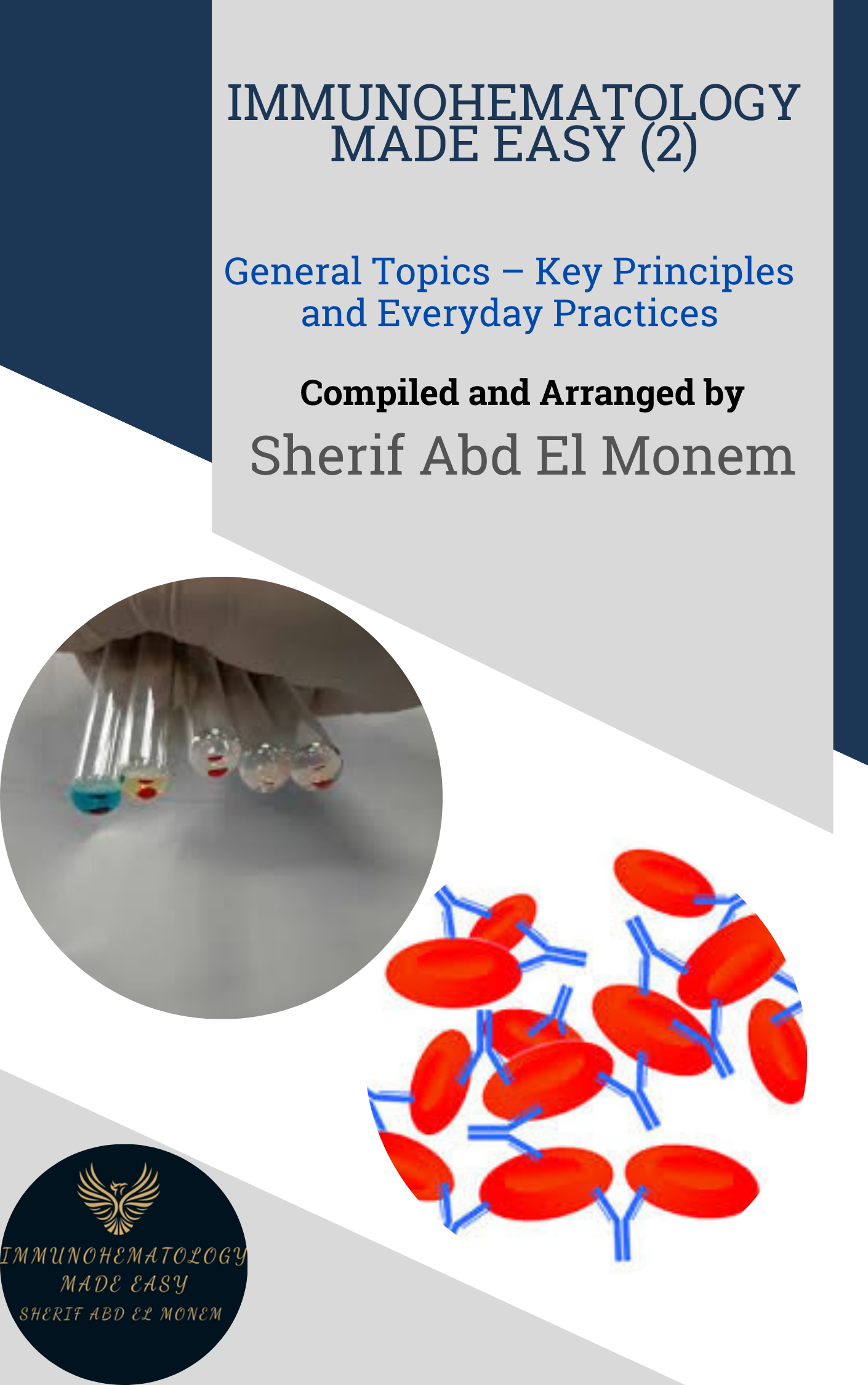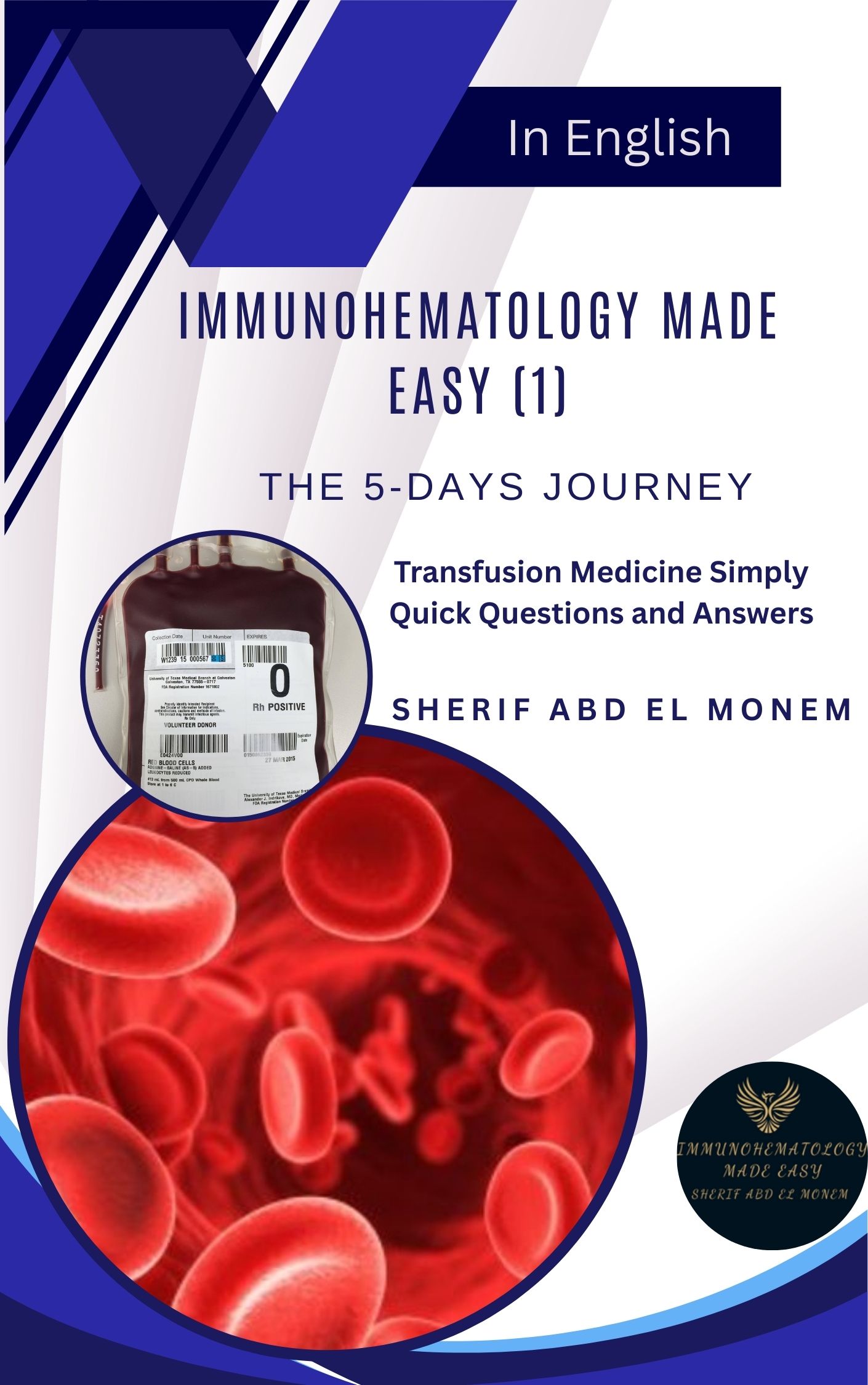ABO and carbohydrate BGS
Transcript summary in points
Recap of ABO and Carbohydrate Blood Group Systems
Overview: This lecture is a recap of carbohydrate antigens in blood group systems, designed to summarize key information and highlight points important for the ASCP exam. For in-depth understanding, refer to individual lectures on each topic.
1. Carbohydrate Antigens: General Characteristics
Not Direct Gene Products: Carbohydrate antigens are not directly produced by genes.
Genes produce transferases, which are enzymes.
Transferases catalyze the production of antigens.
This is done by adding specific sugars to existing carbohydrate chains.
Common Precursor Structure: All carbohydrate antigens share a common precursor structure.
This precursor is a lactosylceramide, which serves as the building block.
There are two types of precursor substances:
Type 1 Precursor: Predominantly found in body fluids and secretions.
Type 2 Precursor: Primarily located on red blood cells (RBCs).
Image Reference: The provided image is helpful as it illustrates how different carbohydrate antigens branch out from a common precursor structure.
2. ABO Blood Group System

Immunohematology Made Easy (2)
General Topics – Key Principles and Everyday Practices
📘 Available now in PDF & EPUB formats
🔗 Visit Store
Most Important System: ABO is the most critical blood group system in transfusion and transplant medicine.
This is due to the presence of naturally occurring antibodies against ABO antigens.
Genes Involved: Three genes are responsible for ABO antigens:
ABO gene
H gene
Secretor gene
Antigen Development:
ABO antigens are detectable in utero as early as 5-6 weeks of gestation.
They reach full adult strength around 2-4 years of age.
H Antigen Expression: Memorize the H antigen expression chart (though not explicitly shown in the transcript, it’s referenced as important).
O cells: Have the most H antigen expression.
React strongest with anti-H.
(Implied: A and B blood types have less H antigen, and AB has the least).
ABO Antibodies:
Predominantly IgM.
Naturally occurring.
Anti-A and anti-B are not present at birth.
Reason why reverse typing is not performed on newborns or cord blood.
Antibodies normally appear around 3 months to 1 year of age.
Reach full adult titers between 5 to 10 years of age.
ASCP Exam Relevance: For the ASCP exam, you need to understand:
Basic biochemistry of the ABO system.
How to resolve ABO discrepancies.
The relationship between secretor, ABO, and Lewis antigens.
3. Lewis Blood Group System (ISBT 007)
Unique Antigen Location: Lewis antigens are not intrinsic to RBCs.
They are synthesized on Type 1 precursor substances found in secretions.
Then, they are absorbed onto the RBC membrane from the plasma.
Primary Lewis Antigens: The two main Lewis antigens are:
Lewis a (Le<sup>a</sup>)
Lewis b (Le<sup>b</sup>)
Lewis Locus Alleles: Two alleles exist at the Lewis locus:
LE (capital LE)
le (lowercase le)
The le allele is an amorph, meaning it does not produce a functional transferase and thus no Lewis antigen directly.
Secretor Locus Alleles: Similar to Lewis, the secretor locus has two alleles:
SE (capital SE)
se (lowercase se)
The se allele is also an amorph, not producing a functional secretor transferase.
Synthesis Dependence: Lewis antigen synthesis depends on two genes (fucosyltransferases):
FUT2 (Fucosyltransferase 2): This is the secretor gene.
FUT3 (Fucosyltransferase 3): This is the Lewis gene.
Image Explanation (Lewis and Secretor Interaction): The provided image is crucial for understanding Lewis antigen expression based on the presence or absence of Lewis and secretor genes.
Lewis negative and secretor negative (lele sese):
No Lewis antigens (Le(a-b-)).
No H antigens in secretions.
Lewis positive and non-secretor (LEle sese or LELE sese):
Lewis a (Le<sup>a</sup>) present (Le(a+b-)).
Lewis positive and secretor positive (LEle SEse, LELE SEse, LEle SESE, LELE SESE):
Lewis b (Le<sup>b</sup>) present (Le(a-b+)).
FUT Gene Functions:
FUT1 (Fucosyltransferase 1): Makes H antigen on RBCs.
Adds fucose to Type 2 precursor substances.
FUT2 (Secretor gene): Adds fucose to Type 1 precursor substance in secretions.
FUT3 (Lewis gene): Adds fucose to Type 1 precursor substance also in secretions.
Interaction of Lewis and Secretor Genes:
Lewis without Secretor (LE and sese): Only Lewis a (Le<sup>a</sup>) activity is seen.
Both Lewis and Secretor (LE and SE): Presence of Lewis b (Le<sup>b</sup>).
A small amount of Lewis a may still be present in secretions, but Lewis b is the predominant antigen.
Neither Secretor nor Lewis (lele sese): Lewis A and B negative (Le(a-b-)).
Lewis Antibodies:
Made by Lewis a and b negative individuals (Le(a-b-)).
Often produce both anti-Le<sup>a</sup> and anti-Le<sup>b</sup>.
Optimal reaction at room temperature (RT), but can also react at 37°C.
Usually IgM, but sometimes IgG.
Rarely cause transfusion reactions, generally considered “annoying” antibodies.
Can be neutralized with Lewis substance.
Anti-Le<sup>a</sup> is common in pregnant women.
Most are naturally occurring.
Enzyme-treated cells enhance reactivity.
Clinical Significance & Management of Lewis Antibodies:
Usually not clinically significant.
Give Cross Match compatible blood.
Pre-warm technique can be used to avoid interference in testing.
4. I Antigens
Link to ABO and H: I antigens are closely linked to ABO and H antigens.
Cold Reactive Antibodies: The type of cold reactive antibody produced is related to ABO blood type.
Linked to the expression of A, B, H, and I antigens on the RBC surface.
Structure:
Little i antigen: Linear precursor structure.
Big I antigen: Branched structure of the little i antigen.
H and I Antigen Expression Chart (Implied): Chart shows the relative amounts of H and I antigens on different blood types. (Not shown but referred to).
Mini Cold Panel: Used to identify cold reacting antibody specificity.
Typically involves cord cells (rich in little i, poor in Big I) and reagent cells (adult cells, rich in Big I, less little i).
Resolving Typing Issues with Cold Antibodies: Cold antibodies can cause problems with blood typing.
Example: Forward type A, Reverse type O. A cold autoantibody can cause extra reactions in reverse typing.
Resolution method: Use pre-warm technique for antibody screen and typing reagents.
Pre-warm all screen reagents; screen should become negative.
Pre-warm reverse typing reagent cells.
Pre-warm patient plasma for reverse typing.
This should allow the reverse type to correctly identify as Type A.
Clinical Significance & Management of I Antibodies:
Usually not clinically significant, mainly “annoying.”
For transfusion, a blood warmer might be used.
5. P1PK and Globoside Blood Group Systems
P1PK Blood Group System (ISBT 003):
Three antigens: P1, P<sup>K</sup>, and p.
Globoside Blood Group System:
Two antigens: P and P<sup>X2</sup>.
LU Blood Group: Antigen Luke was initially in Globoside but moved to the high prevalence 901 series.
Structure Chart (Optional): Chart visualizing the structures can be helpful for understanding relationships (not essential to memorize for exam, but aids understanding).
Phenotypes – Clinical Significance:
Little p phenotype is the most clinically significant.
Individuals with this phenotype can make a clinically significant anti-P antibody.
Phenotype Chart (Key to Understand Phenotypes):
P1 phenotype: Antigens present: P, P1, P<sup>K</sup>. Antibodies made: None.
P2 phenotype: Antigens present: P, P<sup>K</sup>. Antibodies made: Anti-P1.
P1<sup>K</sup> phenotype: Antigens present: P1, P<sup>K</sup>. Antibodies made: Anti-P.
P2<sup>K</sup> phenotype: Antigens present: P<sup>K</sup>. Antibodies made: Anti-P and anti-P1.
Little p phenotype: Antigens present: None (no P1, P<sup>K</sup>, or P). Antibodies made: Anti-P, anti-P1, anti-P<sup>K</sup> (all antibodies of the system).
P1 Phenotype & Anti-P<sup>K</sup>: P1 phenotype cells have P<sup>K</sup> but usually don’t react with anti-P<sup>K</sup> because P1 antigen may sterically hinder or mask P<sup>K</sup>.
Antibodies Related to P Systems:
Allo Anti-P:
Rare antibody because P antigen frequency is very high (>99.9%).
Transfusion reactions are rare (incompatible Cross Match would prevent transfusion).
HDN (Hemolytic Disease of the Fetus and Newborn) is unlikely.
Known to cause spontaneous abortions in Little p mothers.
Auto Anti-P:
Cause of Paroxysmal Cold Hemoglobinuria (PCH).
Powerful biphasic IgG hemolysin.
Donath-Landsteiner Test: Test for PCH.
Incubate cells at 4°C (cold phase), then warm to 37°C (warm phase).
Positive test: Hemolysis occurs (due to biphasic nature of auto-anti-P).
Don’t confuse PCH with PNH (Paroxysmal Nocturnal Hemoglobinuria).
More common in children than adults.
Anti-P1:
Found in P2 individuals.
Almost always naturally occurring IgM antibody.
Reacts best colder than room temperature.
Rarely binds complement.
Can be neutralized.
Does not cause HDN.
Manage by giving Cross Match compatible units.
Anti-P P1 P<sup>K</sup>:
Naturally occurring antibody in Little p individuals.
Does not require stimulation to produce.
Reacts at RT, 37°C, and AHG phase.
Potent hemolysin.
Can cause spontaneous abortions and severe transfusion reactions.
Summary & Further Learning:
This was a quick recap of carbohydrate blood group systems.
Refer to individual lectures for a deeper understanding of each system.

Immunohematology Made Easy (2)
General Topics – Key Principles and Everyday Practices
📘 Available now in PDF & EPUB formats
🔗 Visit Store

📘 New to Blood Bank?
Start your 5-day journey with Immunohematology Made Easy — a simple, beginner-friendly guide with real-life examples!
👉 Get Your Copy Now